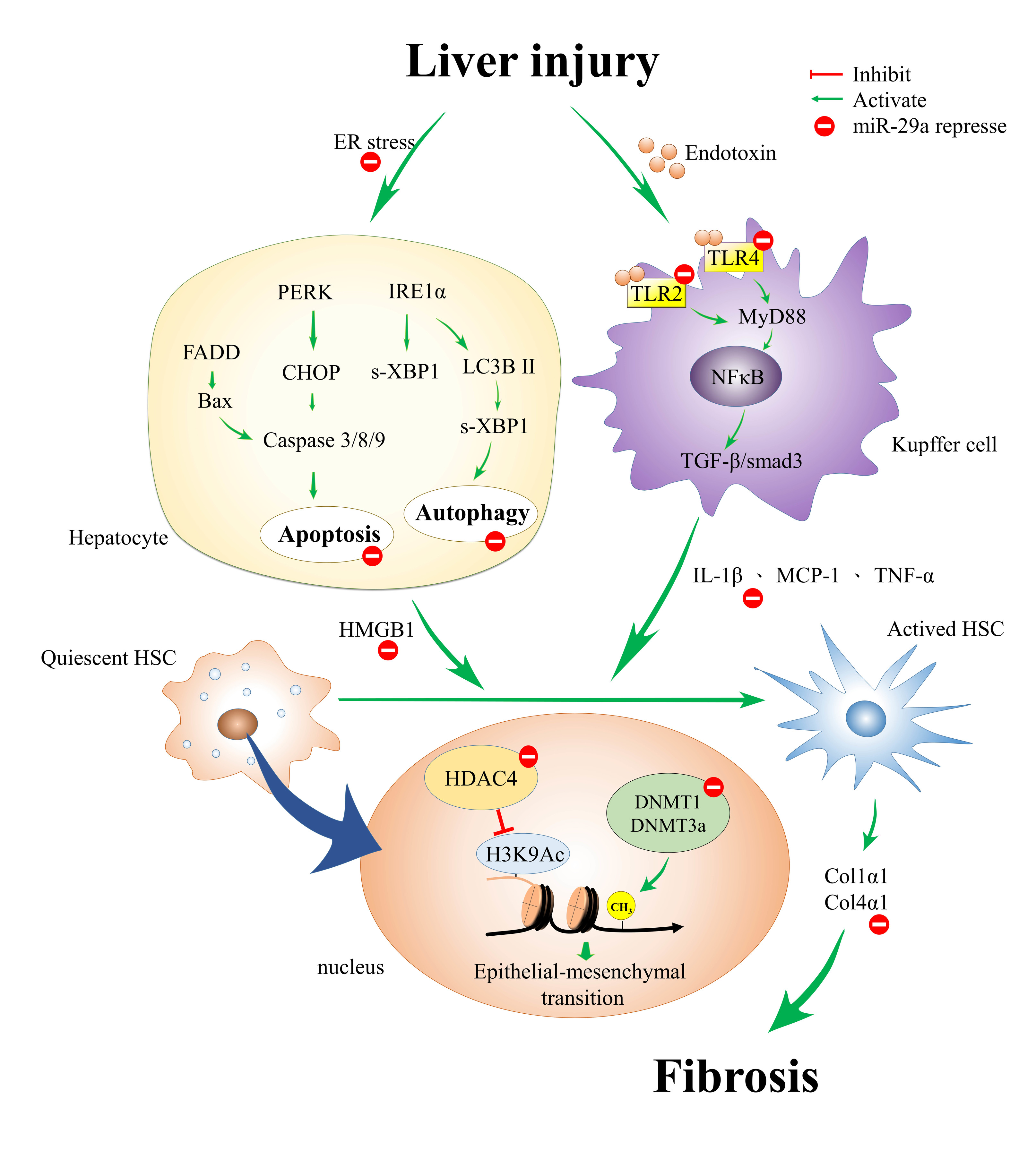Preprint
Review
The role of miR-29a in the regulation, function, and signaling of liver fibrosis
Altmetrics
Downloads
398
Views
338
Comments
0
A peer-reviewed article of this preprint also exists.
This version is not peer-reviewed
Submitted:
10 June 2018
Posted:
11 June 2018
You are already at the latest version
Alerts
Abstract
Both fibrosis and cirrhosis of the liver are the end results of most kinds of chronic liver damage and present a common but difficult clinical challenge throughout the world. The inhibition of the fibrogenic, proliferative, and migratory effects of hepatic stellate cells (HSCs) has become an experimental therapy for preventing and even reversing hepatic fibrosis. Furthermore, a complete understanding of the function of non-coding RNA-mediated epigenetic mechanisms in HSC activation may improve our perception of liver fibrosis pathogenesis. This review focuses on an evolving view of molecular mechanisms in which HSC activation by miR-29a signaling may moderate their profibrogenic phenotype, thus supporting the use of miR-29a agonists as a potential therapy for treating liver fibrosis in the future.

Keywords:
Subject: Biology and Life Sciences - Biochemistry and Molecular Biology
Copyright: This open access article is published under a Creative Commons CC BY 4.0 license, which permit the free download, distribution, and reuse, provided that the author and preprint are cited in any reuse.
MDPI Initiatives
Important Links
© 2024 MDPI (Basel, Switzerland) unless otherwise stated






